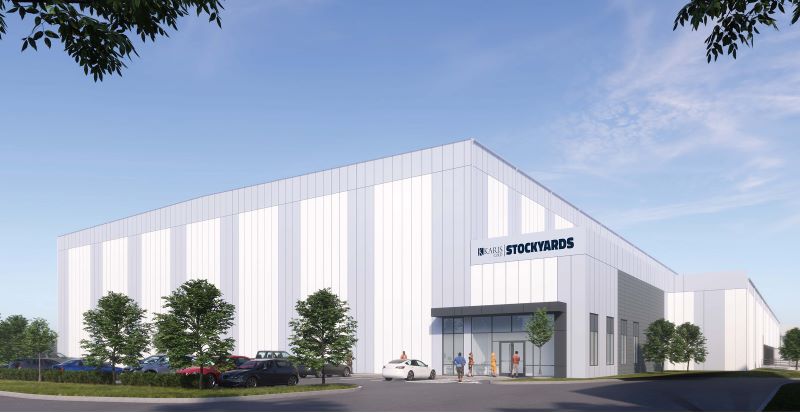September 2022
Supply Chain Challenges: The Era of Deglobalization

As published in Commercial Property Executive
By Agota Felhazi
Adam Roth, executive vice president at NAI Hiffman, on what’s ahead for this pivotal logistics issue.
As experts have predicted nearly a year ago, the supply chain issues still persist, as further lockdowns in China, rising inflation and the ongoing war in Ukraine, which significantly impacted energy costs and blocked shipping routes, only added to the global turbulence. Meanwhile, to mitigate these disruptions, companies adopted several approaches, such as moving away from a just-in-time inventory system toward a just-in-case strategy, which generated increased demand for space in the industrial sector across the U.S.
While Amazon hit the breaks on its aggressive logistics expansion, pointing toward a possible cooling of the red-hot sector, as of yet, the industrial market remains the investment community’s darling with record low vacancy rates. As of July, the national industrial vacancy rate dropped to 4.4 percent, representing a 140-basis-point fall year-over-year, as well as a 20-basis-point drop compared to the June average, according to ComercialEdge data. In terms of markets, Inland Empire remained on top with the highest rent growth (8.7 percent increase in in-place rents over the last 12-month period) as well as the lowest vacancy rate (0.8 percent). Columbus (0.9 percent), Los Angeles (1.9 percent) and Indianapolis (2.1 percent) rounded out the ranking of metros with the lowest vacancy rates.
New construction, which would ease supply chain issues, is also hampered by rising costs and extended construction timelines, among other factors. Despite these setbacks, in July, the nationwide industrial pipeline expanded to 695.7 million square feet of space under construction, amounting to 4 percent of the overall inventory, CommercialEdge data shows.
Adam Roth, executive vice president of Industrial Services at NAI Hiffman & director of NAI Global Logistics, specializes in industrial real estate, building on 10 years of experience in the logistics industry prior to joining the firm. Roth discusses how some markets are better placed than others to withstand supply chain headwinds, how to overcome these concerns and the results of a possible deglobalization in this interview with Commercial Property Executive.
How have supply chain disruptions evolved since the onset of the pandemic?
Roth: The pandemic compressed 10 years of forecasted e-commerce penetration into three months, resulting in a complex and fragile supply chain struggling to adapt. The outcome has been the misplacement of equipment—chassis, containers, trailers—while surge ordering by retailers and just-in-case inventory—versus just-in-time—have exacerbated the imbalance.
How do the rising costs of gas, labor and trucking, and new regulations further impact the supply chain?
Roth: This increases the importance of reducing the “length of haul.” As transportation costs increase, simultaneously, so does the importance of proximity to suppliers and consumers.
Since companies are rethinking their global supply chain setup, is building plants and factories in the U.S. a solution?
Roth: Yes, as the international supply chain becomes more unreliable and expensive, North American production becomes more competitive. Most products will not be produced in the U.S. in their entirety. However, in their board rooms, corporations are discussing what aspects can be produced locally.
With various solutions attempted over the years, what do you believe worked and how else can supply chain issues be alleviated from your point of view?
Roth: As we experience deglobalization, we are entering what I like to call International Regionalization: a supply web offering a level of regional reaction and supplier diversity to replace the historical supply chain.
How can commercial real estate investors overcome these challenges?
Roth: As corporations increase the number of facilities to reduce their length of haul while considering production in North America, there will be real estate opportunities in locations that offer proximity to the population beyond the historical major markets. There will also be opportunities in areas with alternative transportation options, such as intermodal and sites that benefit manufacturing—offering heavy power and water.
Are some markets better placed or prepared than others to weather the supply chain issues?
Roth: Yes, and some markets are better positioned to literally weather climate change, which is factoring into supply chain considerations. For example, locations that have access to fresh water and those less exposed to extreme impacts from global warming are better positioned to weather climate change.
Some experts are saying that there are modest improvements when it comes to these supply strains, but a slowing demand might be the next threat for the economy. Are any of these concerns reflected in the industrial investment market?
Roth: Per my theory of the ‘Rule of 1.5’—that which affects transportation impacts industrial real estate a year and a half later—I believe the increase in transportation costs, which will require reduction of length of haul, development of a supply web and regionalized production, will keep the demand for industrial real estate high and outweigh the influence of reduced consumer spending.
Is there an end in sight for supply chain woes? Tell us about your predictions on the topic.
Roth: The potential return to stability in the supply chain may happen in mid-2023, at the earliest. Investing in real estate continues to be one of the best ways to achieve this stability.
For more information on our industrial brokerage, visit the NAI Hiffman page


